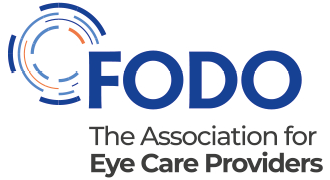Updates
Background
Abuse, neglect, female genital mutilation (FGM), coercive behaviour, trafficking and radicalisation are often hidden in our society. However, they can reveal themselves in a healthcare situation including during occasional health interactions. This is why safeguarding children and adults at risk is an overriding professional duty for all registered eye care practitioners and practices in the same way as for other health and social care practitioners and providers.
Members should therefore hold a safeguarding and prevent policy, and everybody in your organisation should be aware of it. Read on for guidance and support.
Guidance
As part of the Optical Confederation we have published guidance on safeguarding, mental capacity, deprivation of liberties and the prevent strategy to help protect children and vulnerable adults. This includes:
- Overview (pages 1-2)
- Part 1 (pages 3-8) provides a simple five-step guide for all staff and practices to safeguard children and adults at risk and to comply with all relevant legislation. It will help you to be vigilant, able to recognise and report abuse, and help keep your patients and colleagues safe. This part of the guidance was updated in August 2019 in line with the revised Intercollegiate Guidance for Safeguarding Children (2019) and Intercollegiate Adult Safeguarding for Health Care Staff (2018)
- Part 2 (pages 9-10) sets out the responsibilities of optical staff and practices under the UK-wide Prevent Strategy. This requires healthcare providers to work with partner organisations to identify individuals at risk of radicalisation and to refer them to regional Prevent teams for support. The steps to follow in such cases are similar to those for safeguarding other adults, young people and children who are at risk
- Part 3 (pages 11-12) summarises responsibilities for optical practitioners, staff and practices
- Annexes 1 to 6 (pages 13-24) cover: what to look out for; signs that a person is being radicalised; template referral and notification forms; declaration by non-registered staff member, and a body map for records and referrals.
Access the full August 2019 guidance which is suitable for primary eye care settings.
In your practice hub you will also find an employee handbook which explains the importance of safeguarding to all employees.
Other support and advice
The NHS in England has also developed a safeguarding app containing guidance, information and tools useful for frontline practitioners.
If you provide services under an NHS Standard Contract then you must also adhere to service condition 32 on Safeguarding, Mental Capacity and Prevent. Among other requirements, the service condition specifies that the provider must nominate, and advise the co-ordinating commissioner of, the following leads:
- Safeguarding lead and/or a named professional for safeguarding children, young people and adults, in accordance with Safeguarding Guidance
- Child sexual abuse and exploitation lead
- Mental capacity and deprivation of liberty lead
- Prevent lead.

 Patients and public
Patients and public
 Policymakers
Policymakers Members
Members News and views
News and views
